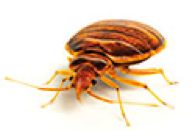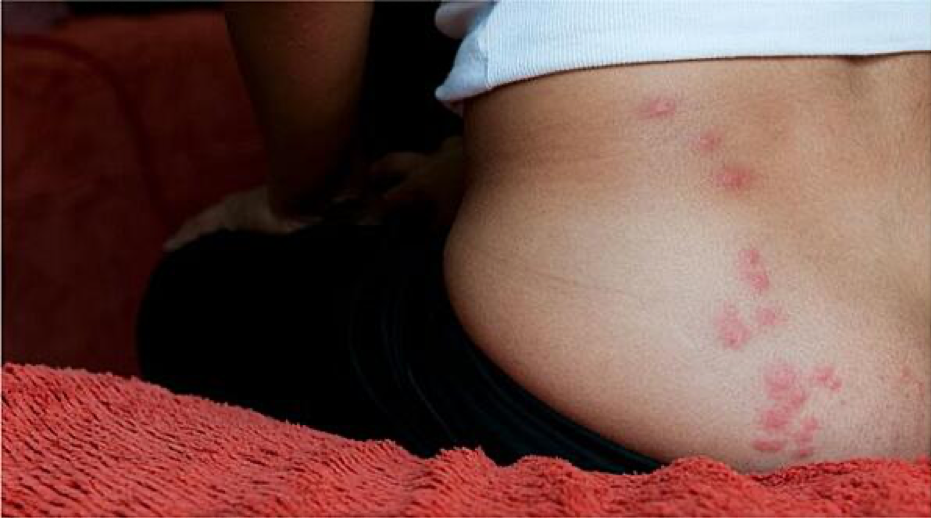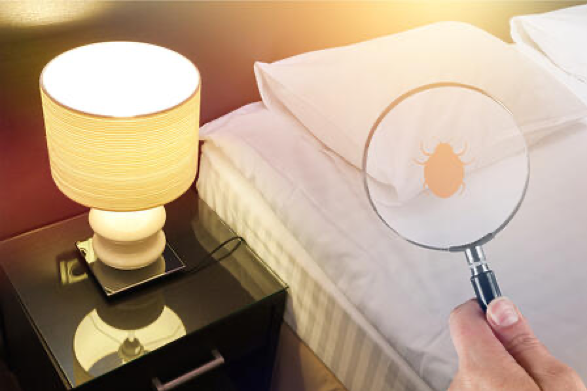 Bed bugs are small, from as little to one millimeter during their early immature stages and reaching no more than ¼ of an inch as adults. These creepy insects feed exclusively on blood, requiring it for both development and reproduction. While they feed primarily on the blood of humans, they can feed on the blood from a wide variety of animals. Their bite can cause itchy red welts, however some people have little to no reaction at all after being bitten. These bugs do not fly or hop quite like ticks or fleas, but instead, they crawl quickly across the ground and are capable of squeezing into the tightest places. Having even the smallest crack or opening in your mattress or headboard may result in bed bugs.
Bed bugs are small, from as little to one millimeter during their early immature stages and reaching no more than ¼ of an inch as adults. These creepy insects feed exclusively on blood, requiring it for both development and reproduction. While they feed primarily on the blood of humans, they can feed on the blood from a wide variety of animals. Their bite can cause itchy red welts, however some people have little to no reaction at all after being bitten. These bugs do not fly or hop quite like ticks or fleas, but instead, they crawl quickly across the ground and are capable of squeezing into the tightest places. Having even the smallest crack or opening in your mattress or headboard may result in bed bugs.
How does a person get bed bugs?
Bed bug infestations spread when an individual comes into contact with bed bugs and unknowingly brings them somewhere else. They are transported as stowaways, hiding in luggage, couches, beds, pillows, or backpacks to name a few. Bed bugs cling to moving items like briefcases and can easily fall off, allowing them to relocate and spread. It’s also a common occurrence that bed bugs lay eggs on these items. As the host moves, they can fall off and hatch far away from where they originally came from.
Common bed bug breeding grounds include hotel rooms, dormitories, sleep-away summer camps, used bedding, and movie theaters to name a few. Some additional conduits for bed bugs include:
- Brought home from day care programs or from school by children
- Brought home from your place of work
- Picked up during business or leisure travel
- Guests brining bed bugs into your home in their luggage or personal belongings during their visit
- Cleaning services, baby sitters, nannies or other people who frequent your home on regular basis
- Brought in on used furniture that is already infested with bed bugs
- Brought home on host from a variety of locations including public transportation, offices, movie theaters, hospitals, etc.
You can find bed bugs at schools and office buildings when they latch on to something like a fabric bag or even clothing. In grade schools, it could be backpacks and in an office setting, it could be a laptop bag. Either way, the bed bugs need to come from a home with an active infestation. The problem with spreading bed bugs is that someone may not know that they have an infestation.
What do bed bug bites look like?

Bed bug bites can be identified by the location on your body, the coloring, and pattern. There are common characteristics of bite manifestation, but the effects can vary from person to person. The bites are typically located on the upper body where skin is exposed such as your neck, chest and arms. Bed bug bites are very itchy and look like red raised welts that are similar to mosquito bites, in lines of 3-4 or more. Their bites are typically painless, so the sleeping victim is usually unaware the tiny insects are feeding on them as they sleep. Once they are fully engorged with blood, they will once again return to their hiding places where they often remain undetected. They typically reside within close range to the sleeping areas but have been shown in research to travel several feet to locate a host.
A visual inspection of the skin does not necessary confirm the presence of bed bug activity at your home. Only a professional on-site inspection can confirm a bed bug infestation.
Can cleaning companies get rid of bed bugs?
Several companies provide cleaning services for bed bug infestations in the Tallahassee area. The services of the cleaning company are contracted by a homeowner or a pest control company before the arrival of a professional bed bug removal company (in most cases). The common misconception by some homeowners who suspect bed bugs is that these companies can get rid of active bed bugs without chemicals (or a pest control professional), and can simply clean out the bed bugs with their cleanup services.
The short comings of the bed bug cleaning service include vacuuming and putting linens into the dryer on high heat. While this will get rid of visible bed bugs, it still does not address the main areas where they live and breed. Another issue with cleaning companies is that they often unknowingly mishandle linens. Shaking them or flinging them onto the floor can move the bed bugs and cause the infestation to relocate or even spread.

The approach that most professional bed bug cleaning companies take is not to get rid of bed bugs, but instead, to prepare your bedroom for professional bed bug pest control. While reducing clutter, vacuuming the room, and putting pillows and bed sheets into a dryer on high heat can help with bed bug infestations, it’s not a substitute for professional bed bug pest control. Some people reach out to cleaning companies in hopes of avoiding treatments from pest control companies which can be pricey (depending on the severity of the infestation) and also trying to avoid pesticides (something we will go into later.) Unfortunately, there is no “quick fix” or shortcut when it comes to effective bed bug elimination.
How can I avoid bed bugs while traveling?

In a survey by the National Pest Management Association (NPMA), 75% of pest control professionals indicated that they have encountered infestations of bed bugs in hotels and motels. The NPMA recommends the following tips for bed bug prevention when traveling:
-
- At hotels, pull back the sheets and inspect the mattress seams, particularly at the corners, for telltale stains or spots. If you see anything suspect, notify management and change rooms/establishments immediately.
- Thoroughly inspect the entire room before unpacking, including behind the headboard and in sofas/chairs. If any pests are spotted, change rooms/ establishments immediately
- If you do need to change rooms, be sure that you do not move to a room adjacent and/or directly above/below the suspected infestation. Bed bugs can easily hitchhike via housekeeping carts, luggage and even through wall sockets. If the infestation is spreading, it typically does so in the rooms closest to the origin.
- Consider placing your suitcase in a plastic trash bag or protective cover during the duration of your trip to ensure that bed bugs cannot take up residence there prior to departure
- Remember: bed bugs travel by hitching rides. After your trip, inspect your suitcases before bringing them into the house. Vacuum your suitcase thoroughly before storing away. Consider using a garment hand steamer to steam your luggage, which will kill any bed bugs or eggs that may have hitched a ride home.
- Wash all of your clothes – even those that have not been worn – in hot water to ensure that any bed bugs that may have made it that far are not placed into your drawers/closet.
How can I tell if I have bed bugs?
The most reliable source for confirming a bed bug infestation is by contacting a pest control professional but there are a few key signs of their activity within your home.
- Going to bed and waking with bites, welts or rashes. Bite marks may appear in a rows and clusters.
- Dark spotting or blood droplets on mattresses, pillows or bedding. These are waste products bed bugs excrete while digesting a blood-meal.
- Visible observation of eggs, molted insect skin, or the insect. The failure to locate an insect does not indicate they are not present. Adult bed bugs are difficult to locate, and immature bed bugs can be difficult to see due to their size.
If you think you have a bed bug problem you want to look throughout your bedroom, primarily in the box spring, headboard, and frame of the bed. They also make their way into other furniture in the bedroom like couches, chairs, or dressers. Keep in mind that bed bugs are not exclusive to beds, you can have them anywhere in your home, such as behind electrical outlets and behind hung picture frames and artwork.
How can I get rid of bed bugs on my own?
If you think you have bed bugs, do not try to treat on your own. Without in-depth knowledge of bed bug biology and behavior, the proper professional tools, and entomological training, it’s more than likely that you will just push and scatter bed bugs rather than eliminating them. DIY tactics and store bought products may kill a few bed bugs, but ultimately it will repel bed bugs, pushing them out of their hiding places. This is also true for throwing out affected box springs and furniture. Bed bugs will simply find other hiding spaces in your home rather than being thrown out. Doing things on your own makes it even more challenging and time consuming for pest control professionals to eliminate bed bugs when the pests are scattered throughout different rooms and harder to find. Always call a professional if you think you may have bed bugs.
What are Bed Bugs Termite and Pest Control in Tallahassee FL?
Serving Your Pest Needs for over 50 years in Tallahassee FL
